In the Footsteps of St. Paul: A Pilgrimage...
Trace St. Paul the Apostle’s journey...
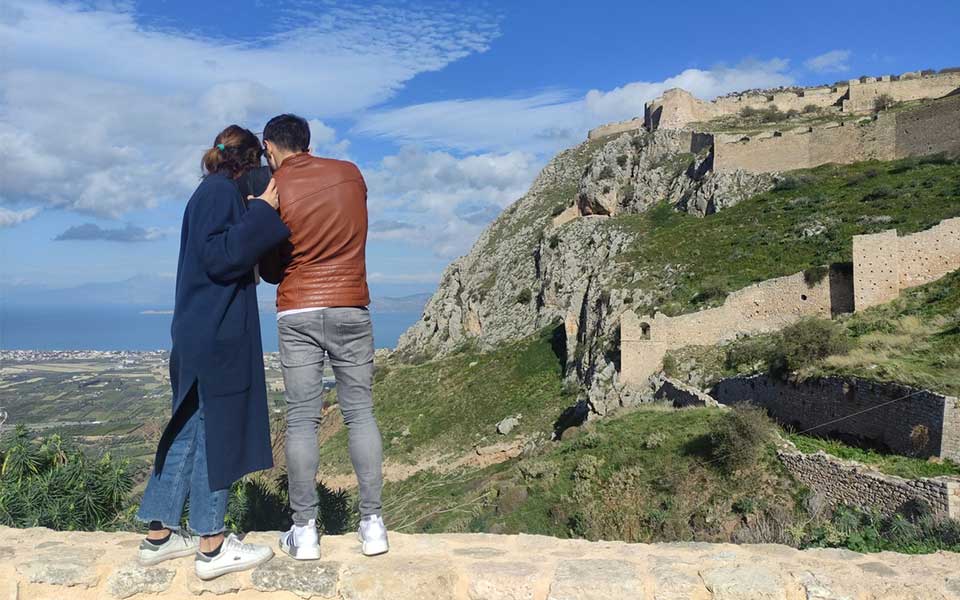
© girandoperilmondo.it
Towering in the distance, it’s a sight every traveler spots when approaching the Peloponnese from Athens. Once we cross the Isthmus of Corinth, we’re immediately struck by its presence, but we forget it again just as quickly while on our way to more distant destinations. Nonetheless, Acrocorinth and its fortifications form one of Greece’s most important monuments, with an impressive history and, at a height of 575 meters, equally impressive views.
What’s more, a trip to the castle grounds on the top of the rock is only part of the attraction; the ruins of Ancient Corinth at the base of the enormous butte are fascinating, and a visit here can be combined with stops in other areas and towns of the Peloponnese.
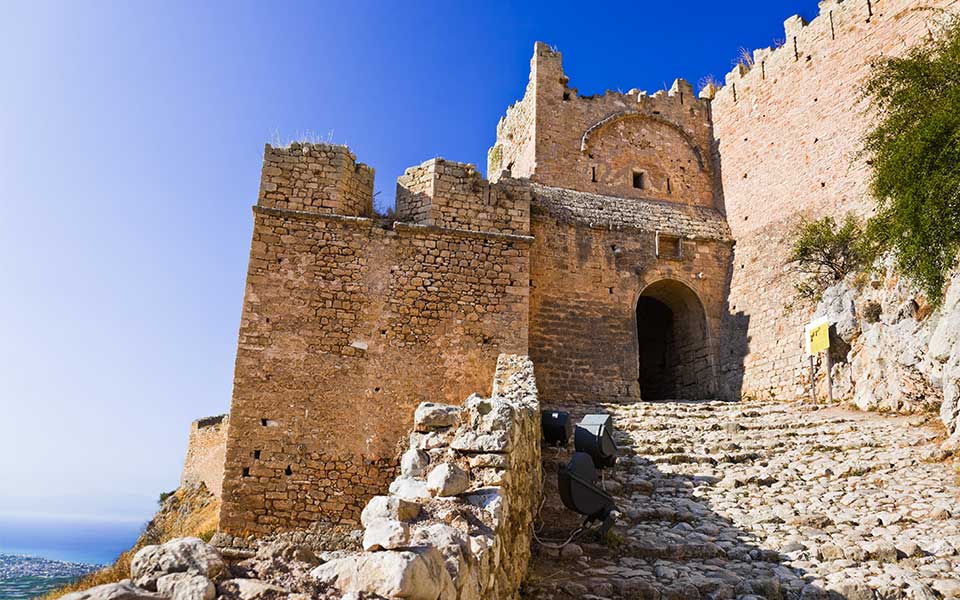
The site is open daily from 08:30 to 15:30 and entrance is free of charge
© Shutterstock
One of Greece’s largest and oldest fortified citadels, Acrocorinth is particularly popular among foreign tourists with a fondness for Greek mythology and antiquity. Over the years, whoever controlled this peak could keep an eye on all of Corinth and the passage to Central Greece. It’s incredible to be able to walk in the footsteps of some of the great names in history who made their way up to the acropolis, too, and gazed out over the plain and the Gulf of Corinth. First came Periander, ruler of Ancient Corinth from 627 to 585 BC, who was counted as one of the Seven Sages of Greece; it was he who initiated the fortification of Acrocorinth. Julius Caesar had it repaired centuries later in 44 BC. The Byzantine archon Leo Sgouros, fighting against Frankish forces, committed suicide here in 1210 when he jumped off its walls on his horse. The great Ottoman sultan Mehmed the Conqueror, who seized it in 1458, was another of the many storied foreign leaders, including Romans, Franks, and Venetians, who passed through its gate over the years until it returned to Greek control in 1827.
Today, there are still portions of the wall that date back to the 4th century BC; the greater part of the surviving fortifications, which date to the Middle Byzantine period, follow the outline of the ancient walls.
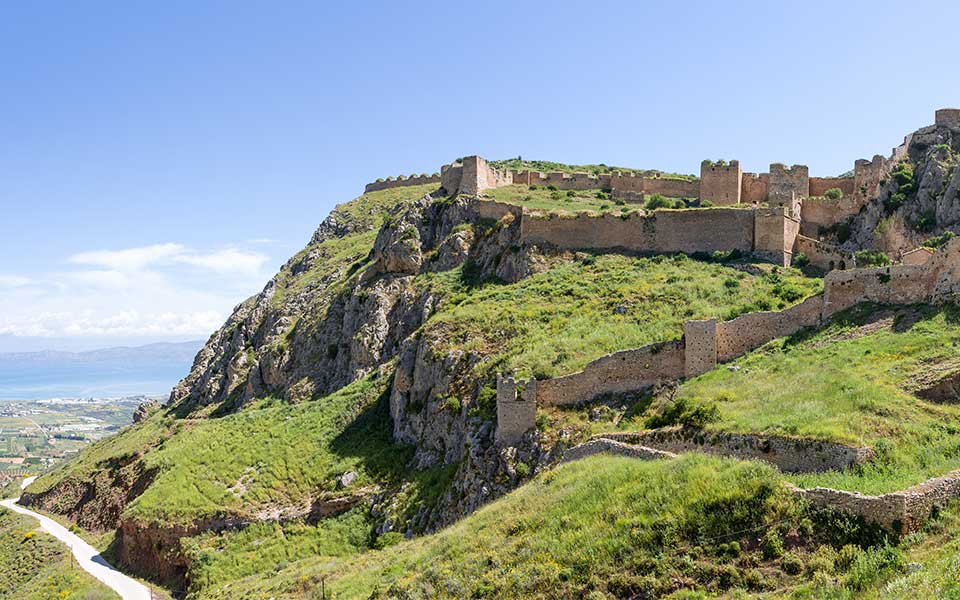
Today, there are still portions of the wall that date back to the 4th century BC.
© Shutterstock
Apart from its compelling history, the 25-hectare area enclosed by fortifications offers visitors amazing views, especially at its highest point where, according to Greek mythology, Medea built a temple in honor of the Greek goddess Aphrodite. It’s said that this temple was home to many of the goddess’ priestesses; other historians refer to these women as slaves forced into prostitution to bring riches to the temple and the region.
Acrocorinth stands 11 km southwest of the city of Corinth. The site is open daily from 08:30 to 15:30 and entrance is free of charge. The area is ideal for peaceful morning walks, but keep in mind that there are no service facilities whatsoever.
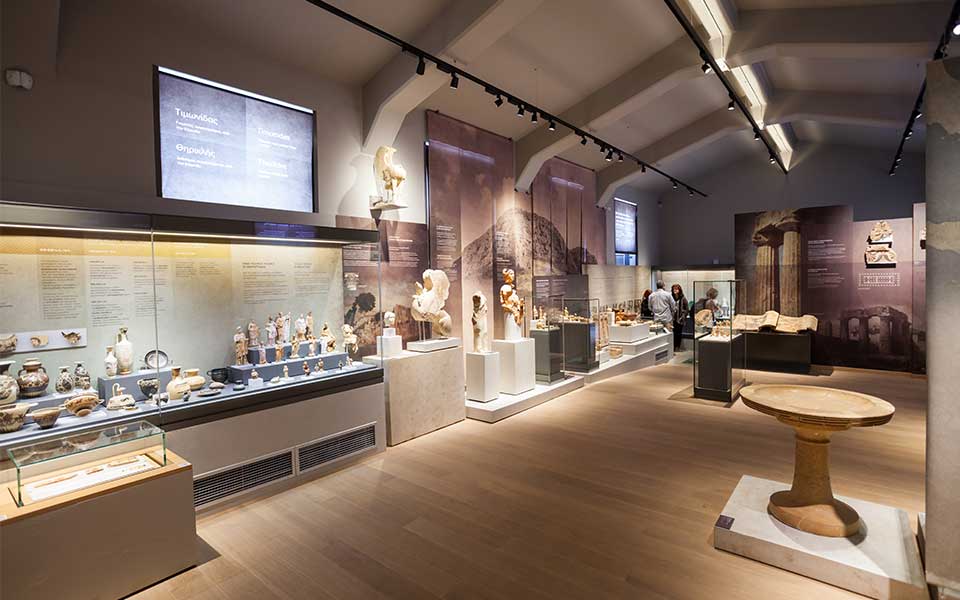
The Archaeological Museum of Ancient Corinth
© Shutterstock
A visit to the Archaeological Museum of Ancient Corinth is a must for anyone who wants to learn about the important role that the city, the citadel and the greater area played from antiquity to the present. This small museum, which was founded by the American School of Classical Studies in 1932, houses millennia of history in a relatively small space.
Its exhibits, which include finds from Corinth’s prehistoric era to the Byzantine period, help illustrate why Ancient Corinth, which controlled the waterways between the West and the East, was such an important city-state, and how, from as early as the 8th century BC, it was able to found the colonies of Corfu and Lefkada in the Ionian Sea, Ambracia on the mainland, and Syracuse on the island of Sicily.
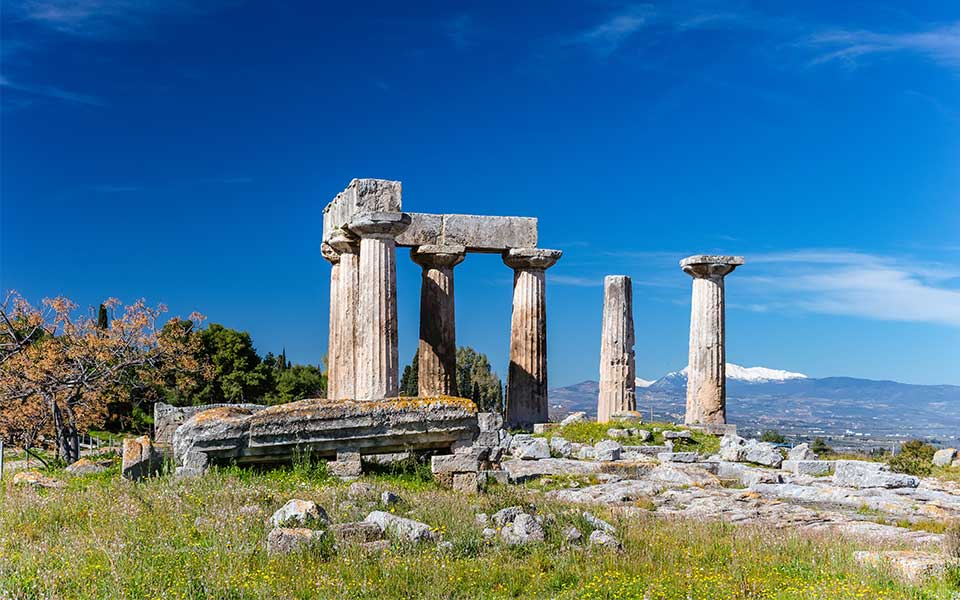
The famed 6th-century BC Temple of Apollo
© Shutterstock
One of the most intriguing displays is in the museum’s new wing, where visitors can follow a modern interactive narrative involving the Twin Kouroi from ancient Tenea, the only burial monuments featuring twin sculptures from the archaic period that have been found in Greece. The sculptures of two young men, which date to 530 BC and 520 BC, were found in the possession of looters in Clenia, Corinth, in 2010. However, this is not the only story of antiquities theft that the museum has to tell. In 1990, thieves broke into the museum, gagged and injured the guard, and stole 285 ancient artifacts, vases, idols, items of jewelry and other objects. Fortunately, most of the pieces were found in the US nine years later and, after lengthy negotiation, were returned to Corinth in 2001.
Entry to the museum costs €4 and includes admittance to the archaeological site of Ancient Corinth, where the famed 6th-century BC Temple of Apollo still stands. Around the temple, you’ll find the Roman Agora, the Theater, the Roman Odeon and the Asclepieion, as well as Frankish, Venetian and Ottoman monuments.
Along the pedestrianized street just outside the archaeological site, you’ll find a number of cafés. The immediate area, however, is not known for its good food. If you’re not carrying on from here to Nemea or Nafplio or any of the small mountain villages in the area, you can head to the seaside town of Vrachati for some delicious seafood at Bati (Tel. (+30) 27410.559.61) or to the resort town of Loutraki, where you can try the delicacies of Maistrali (83 Poseidonos). Both tavernas are 15 to 20 minutes by car from Ancient Corinth.
Trace St. Paul the Apostle’s journey...
Just a short distance from Athens,...
A soulful celebration of longevity, blending...
Whether by foot, car, or the...